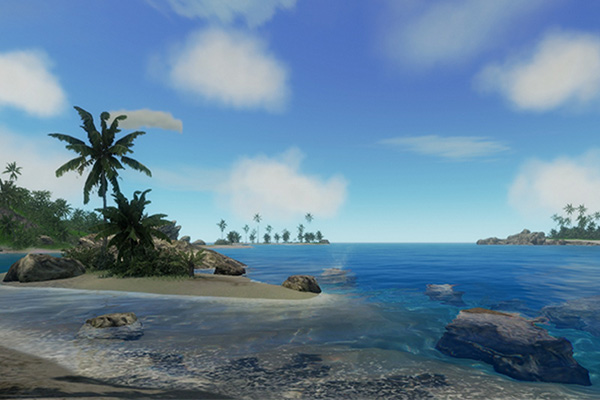
What are immersive virtual environments?
Immersion. Immersion. Say it with me, “Immersion!”
This word gets thrown around a lot, particularly in the discussion of graphics and games. What does it really mean? The dictionary definition is “The state of being deeply engaged or involved.” When it comes to virtual environment design, immersion is a feeling of being present within a virtual world – and it is the first thing that has to be achieved in any Virtual Reality experience. You may have experienced immersion while watching a movie, TV show, or even reading a book. Immersive virtual environments for VR go several steps further to take over a user’s field of view and give them a sense of presence inside a Virtual Reality experience.
The persuasive power of immersion
Environments are a cornerstone of Virtual and Augmented Reality applications, and each virtual environment gives the user context about the experience they are having. Naturally, people feel differently while they’re sitting inside in an office than they do playing outside on a breezy, sunny Sunday. Expertly created virtual environments influence a user’s state of mind in the same way.
Imagine yourself standing in a stark white room
Imagine standing in a stark white room with no windows and only one door. The bright fluorescent light illuminating the room comes from a large rectangle, flush with the ceiling, stretching nearly half the width of the room. You see a small vent blowing chilled air near the ceiling on the wall opposite the door. A steel desk sits in the center of the room and has some old paper scattered across it. This environment feels very sterile and induces a certain reaction without explicitly telling the viewer a story about the scene. That reaction is very different from what a viewer would feel if they saw that same steel desk on a rocky patio overlooking a forested mountain range at sunset.
3 secrets for building immersive environments
Truly immersive environments make a user feel like they are actually in another location. It is like the difference between looking at a picture of the beach while listening to a recording of waves crashing and actually walking on the beach.
Unity3D is a development platform that simplifies the process of building immersive virtual environments. There are 3 powerful features built into Unity that make building environments easier.
1. Physically Based Shading
2. Substance Designer
3. Global Illumination
With Unity’s Physically Based Shading, developers can make physically correct materials in far less time than before. A developer takes the properties of a real world material and applies them to the material in Unity. Properties like the albedo color, shininess, and surface normals are applied, and together these form a physically correct appearance.
Substance Designer takes physically-based shading to the next level. It helps developers build textures for the objects that go into the physically based shading pipeline. It is completely dynamic, generating textures from as few or as many parameters as needed. The substances can then be customized further after importing into the Unity editor.
Global Illumination is Unity’s system for calculating lighting. Like physically based shading, it uses physics to calculate lighting. For instance, this is the equation for global illumination:
In English, it means that the light visible from a particular spot is determined by the light given off by that spot combined with the light cast upon it. This creates realistic lighting for the environment and only requires a small amount of setup.
Unity Technologies made a short film to demonstrate these 3 key features in Unity 5 and subsequently released the environment used in the film. It is an excellent example of a well-built environment. It takes advantage of physically based rendering and global illumination to create a realistic environment.
Vuforia: linking virtual and physical environments
Vuforia is the mobile vision platform from Qualcomm that enables new applications for environments. With Vuforia, you can tie virtual environments to the real world through image recognition, allowing users to interact with a virtual environment surrounding them. The Lowe’s Holoroom experience uses Vuforia’s capabilities to let shoppers design their bathroom and virtually walk into it, at life size.
Evolving environments
The Virtual Reality developer community is small but growing, and one of the first things we can really delve into is the creation of different virtual environments. Companies like Oculus are coming out with some truly mind-blowing Virtual Reality experiences, playing with human scale in Henry and Godling, and even sending viewers into outer space. Right now, the quality of environments is limited by the processing power in head mounted display devices. As devices evolve, Virtual Reality environments will become more compelling and immersive. The only question is, where do you want to go next?












